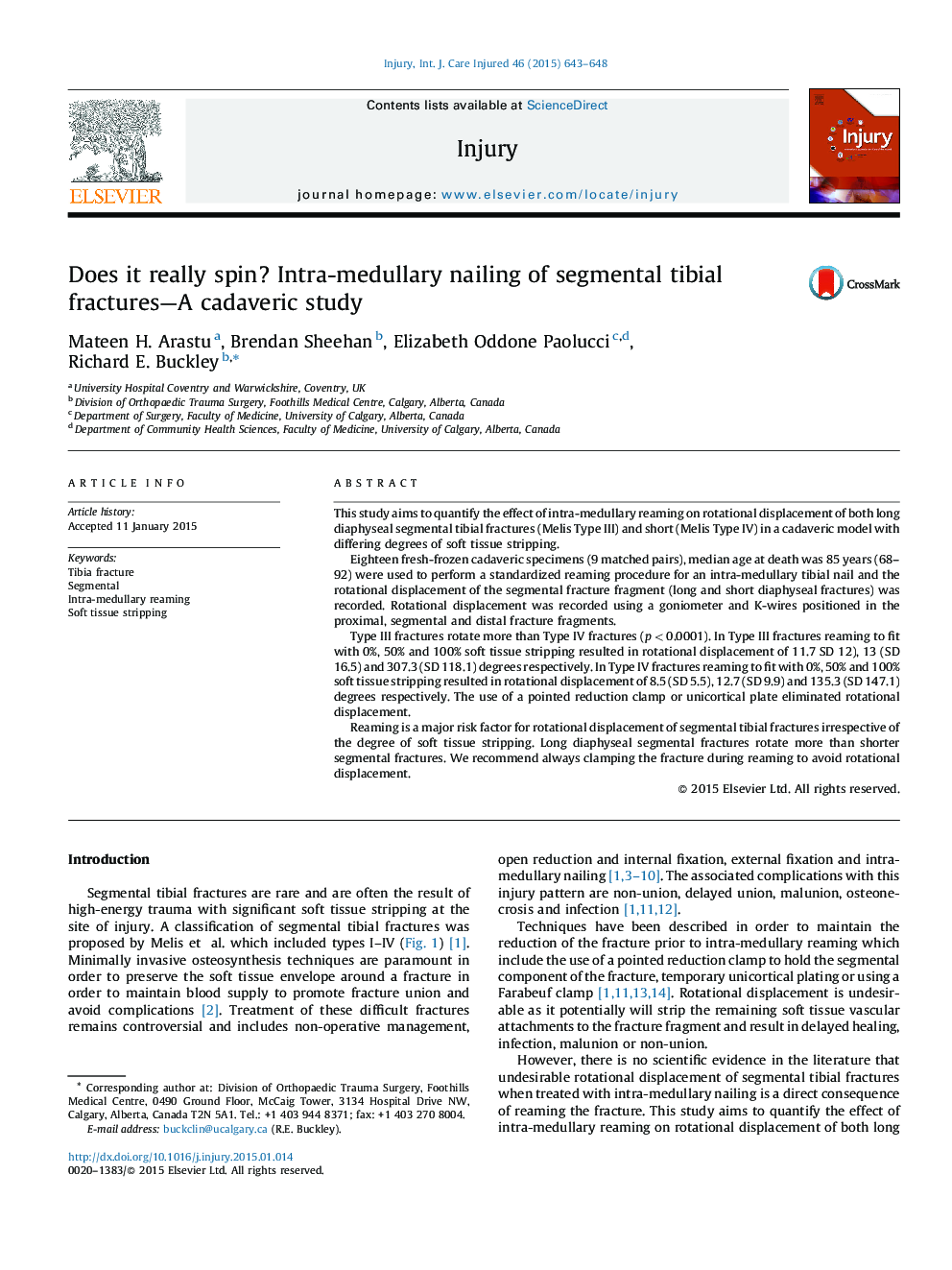| Article ID | Journal | Published Year | Pages | File Type |
|---|---|---|---|---|
| 3239059 | Injury | 2015 | 6 Pages |
This study aims to quantify the effect of intra-medullary reaming on rotational displacement of both long diaphyseal segmental tibial fractures (Melis Type III) and short (Melis Type IV) in a cadaveric model with differing degrees of soft tissue stripping.Eighteen fresh-frozen cadaveric specimens (9 matched pairs), median age at death was 85 years (68–92) were used to perform a standardized reaming procedure for an intra-medullary tibial nail and the rotational displacement of the segmental fracture fragment (long and short diaphyseal fractures) was recorded. Rotational displacement was recorded using a goniometer and K-wires positioned in the proximal, segmental and distal fracture fragments.Type III fractures rotate more than Type IV fractures (p < 0.0001). In Type III fractures reaming to fit with 0%, 50% and 100% soft tissue stripping resulted in rotational displacement of 11.7 SD 12), 13 (SD 16.5) and 307.3 (SD 118.1) degrees respectively. In Type IV fractures reaming to fit with 0%, 50% and 100% soft tissue stripping resulted in rotational displacement of 8.5 (SD 5.5), 12.7 (SD 9.9) and 135.3 (SD 147.1) degrees respectively. The use of a pointed reduction clamp or unicortical plate eliminated rotational displacement.Reaming is a major risk factor for rotational displacement of segmental tibial fractures irrespective of the degree of soft tissue stripping. Long diaphyseal segmental fractures rotate more than shorter segmental fractures. We recommend always clamping the fracture during reaming to avoid rotational displacement.
